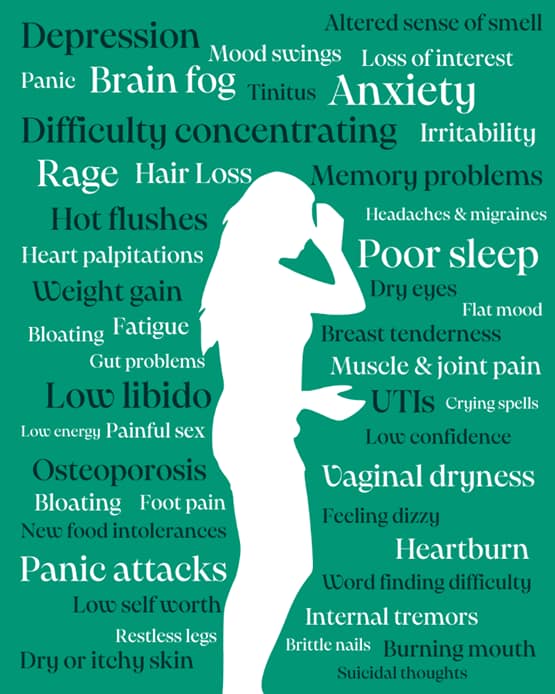
Is ADHD a trend diagnosis? Between TikTok, Self-Diagnosis, and Misinformation
In recent years, growing numbers of adolescents and adults are seeking evaluation for ADHD (Rosso et al., 2023). With an increasing number of diagnoses, as well as increasing attention to the disorder in popular media, some voices have been calling ADHD a trend diagnosis. TikTok may play a significant role in this, with videos under the hashtag #adhd being highly popular (Yeung et al., 2022; Chochol et al., 2023). But how serious is ADHD actually? Is the increasing number of diagnoses really due to the disorder trending? And if that is the case, what would that mean? And what role does TikTok play in all of this?
ADHD, short for attention-deficit hyperactivity disorder, is classified as a disorder of the mind that includes three main features: inattention, hyperactivity, and impulsivity (Rosso et al., 2023). This does not mean every person classified as ADHD is hyperactive and impulsive and cannot concentrate at all. Instead, there are different forms of the disorder, with some people struggling more with hyperactivity and restlessness, and yet others having more problems keeping their attention focused (Attoe & Climie, 2023). ADHD can only be diagnosed by licensed clinicians and is done so based on multiple, well-defined criteria that must have been present for at least half a year in various situations and settings, with the symptoms having already begun in childhood (Faraone et al., 2021). The diagnostic process is well thought-through and requires more than just the filling out of a rating scale. This widely agreed-upon diagnostic process paired with the fact that the existence of ADHD symptoms is neither new nor culture-bound, speaks for itself considering the validity of the disorder (Faraone et al., 2021).
The diagnostic process of ADHD is well thought-through and requires more than just the filling out of a rating scale.
Recently, the inattention kind of ADHD has in particular received a lot of attention. This lead to more diagnoses in women, who have in the past been frequently left out of the picture in ADHD diagnosis and research (Attoe & Climie, 2023). The mind of individuals with the inattention type of ADHD can feel like a very crowded city road. Imagine driving through this traffic and trying to focus on everything that is going on around you, to safely manage the journey. There is just too much happening! There are multiple lanes, one car comes after the next, driving past you, behind you, lights flashing, street signs passing by, honking everywhere. Your mind races and your attention jumps from one thing to the next, trying to take it all in but ending up not really focusing on anything at all. This is what inattention can feel like in the ADHD mind.
The mind of individuals with the inattention type of ADHD can feel like a very crowded city road.
It may now become clear to you that ADHD can have a large impact on the daily lives of affected people. Adults with ADHD often have difficulties pursuing daily activities, due to their distractibility and a feeling of impulsivity and restlessness. A lot of times, this is also accompanied by other mental health problems like anxiety, depression, or addiction (Kooij, 2022). Sometimes, people develop coping strategies to help them live with the disorder, such as keeping themselves as busy as possible, as some can only focus on doing something when they are under enough pressure (Cripe et al., 2024). However, the symptoms and ways of coping differ widely, making ADHD difficult to diagnose in adolescents/adults and regularly misunderstood (Sibley, 2021). This all is to say – yes, ADHD is a real and serious condition that can have a negative impact on the affected person‘s life. And its classification is important, as the disorder can be well managed with treatment (Kooij, 2022).
More and more people seek out professionals for diagnosis based on what they have seen on TikTok, oftentimes having already self-diagnosed with ADHD.
But what role does TikTok play in all this? ADHD has become a popular topic on the social media platform, with the hashtag #adhd already having gathered 9.4 billion views in early 2022 (Chochol et al., 2023), numbers only rising since then. This trend not only leads to increased awareness of ADHD, but also to more people identifying with symptoms of ADHD as presented in the video clips. More and more people seek out professionals for diagnosis based on what they have seen on TikTok (Yeung et al., 2022), oftentimes having already self-diagnosed with ADHD (Chochol et al., 2023). The easy accessibility of the wealth of mental health content on the app combined with its adaptive algorithm leads to an overestimation of the occurrence of ADHD and the quick spread of convincing information about the disorder (Chochol et al., 2023).
But isn’t it a good thing that awareness is spread and more people seek the help of professionals? Yes and no.
On the one hand, the attention drawn to ADHD can be seen positively, with more people becoming aware of the symptoms and seeking help. In this way, especially women, who have in the past often been neglected in diagnosis and research of ADHD, may recognize the symptoms presented on the app and find relief in getting a diagnosis. There‘s also the possibility that the trending videos make unaffected people understand the disorder better and gain respect for those struggling with it.
On the other hand, it seems like the popularity of the topic in popular media has rather led to the contrary – instead of more people acknowledging ADHD as a real disorder and understanding how difficult life with it can be, affected people have to defend themselves against the accusation of the diagnosis being merely a “trendy label“ (Kooij, 2022). The number of people self-diagnosing themselves with ADHD without actually suffering from it (only because they occasionally struggle with keeping their focus after scrolling through TikTok for hours on end) doesn’t help this cause. At the same time, the widely accessed and spread information about ADHD on TikTok may be highly understandable, but this doesn’t say anything about its accuracy. In fact, more than half (52%) of the top 100 videos with the hashtag #adhd were found to be misleading when analyzed by a group of professionals (Yeung et al., 2022). This means that the popularity of ADHD on TikTok not only leads to people overestimating its occurrence and their own potential symptoms, but also potentially self-diagnosing based on false information. It also means that the app generally paints a faulty picture of the disorder.
The popularity of ADHD on TikTok not only leads to people overestimating its occurrence and their own potential symptoms, but also potentially self-diagnosing based on false information.
Affected people have to defend themselves against the accusation of the diagnosis being merely a “trendy label“.
Now, I conclude by saying that it is important that ADHD is widely addressed and destigmatised. This cannot just increase awareness of the impacts of ADHD on people‘s lives, making it easier for affected people to cope with the disorder, but also potentially help people seek a diagnosis in the first place – a diagnosis which can help prevent future problems and provide patients with the necessary pharmacological or therapeutical treatment to make their daily life manageable again (Faraone et al., 2021). However, there is just too much misinformation being spread on TikTok and too many wrongful self-diagnoses, denying credibility to those really affected. With this in mind, I hope that people can view the #adhd TikTok content more critically and understand that ADHD is more than just a trendy label – it is a real diagnosis that people, including adults, struggle with on the daily, trying to navigate the busy highway in their head. So, everyone: Know your sources and don’t trust everything you see on TikTok!
Further reading
If you want to learn more about ADHD, you may start reading the ADHD guide (available in several languages): https://www.adhd-federation.org/publications/adhd-guide.html
Sources
Attoe, D. E. & Climie, E. A. (2023). Miss. Diagnosis: A Systematic Review of ADHD in Adult Women. Journal Of Attention Disorders, 27(7), 645–657. https://doi.org/10.1177/10870547231161533
Chochol, M. D., Gandhi, K., Elmaghraby, R. & Croarkin, P. E. (2023). Harnessing Youth Engagement With Mental Health TikTok and Its Potential as a Public Health Tool. Journal Of The American Academy Of Child And Adolescent Psychiatry, 62(7), 710–712. https://doi.org/10.1016/j.jaac.2022.11.015
Cripe, E. T., LeBlanc, S. S., Eilert, M. & Bernhardt, K. S. (2024). Coming to Terms with Our Racecar Brains: Academic Mothers Experiencing Adult Diagnosis of ADHD. Health Communication, 1–4. https://doi.org/10.1080/10410236.2024.2331999
Faraone, S., Banaschewski, T., Coghill, D., Zheng, Y., Biederman, J., Bellgrove, M., Newcorn, J., Gignac, M., Saud, N. A., Manor, I., Rohde, L. A., Yang, L., Cortese, S., Almagor, D., Stein, M., Albatti, T., Aljoudi, H., Alqahtani, M., Asherson, P., . . . Wang, Y. (2021). The World Federation of ADHD International Consensus Statement: 208 Evidence-based conclusions about the disorder. Neuroscience & Biobehavioral Reviews, 128, 789–818. https://doi.org/10.1016/j.neubiorev.2021.01.022
Kooij, J. J. S. (2021). Introduction. In Adult ADHD: Diagnostic Assessment and Treatment (pp. 1–29). Springer. https://doi.org/10.1007/978-3-030-82812-7_1
Rosso, G., Portaluppi, C., Teobaldi, E., Di Salvo, G. & Maina, G. (2023). Assessing Adult ADHD through Objective Neuropsychological Measures: A Critical Overview. Journal Of Attention Disorders, 27(7), 786–794. https://doi.org/10.1177/10870547231167564
Sibley, M. H. (2021). Empirically-informed guidelines for first-time adult ADHD diagnosis. Journal Of Clinical And Experimental Neuropsychology, 43(4), 340–351. https://doi.org/10.1080/13803395.2021.1923665
Yeung, A. T., Ng, E. & Abi-Jaoude, E. (2022). TikTok and Attention-Deficit/Hyperactivity Disorder: A Cross-Sectional Study of Social Media Content Quality. The Canadian Journal Of Psychiatry/Canadian Journal Of Psychiatry, 67(12), 899–906. https://doi.org/10.1177/07067437221082854
Image credits
The featured image was photographed by Shiva Reddy and downloaded from Pixabay.



